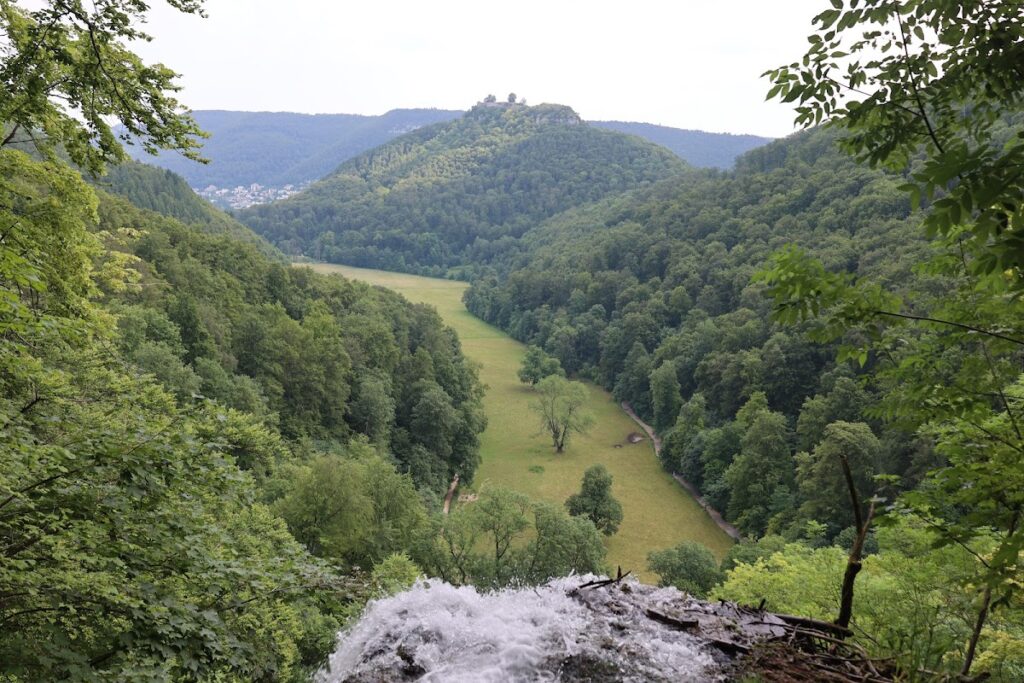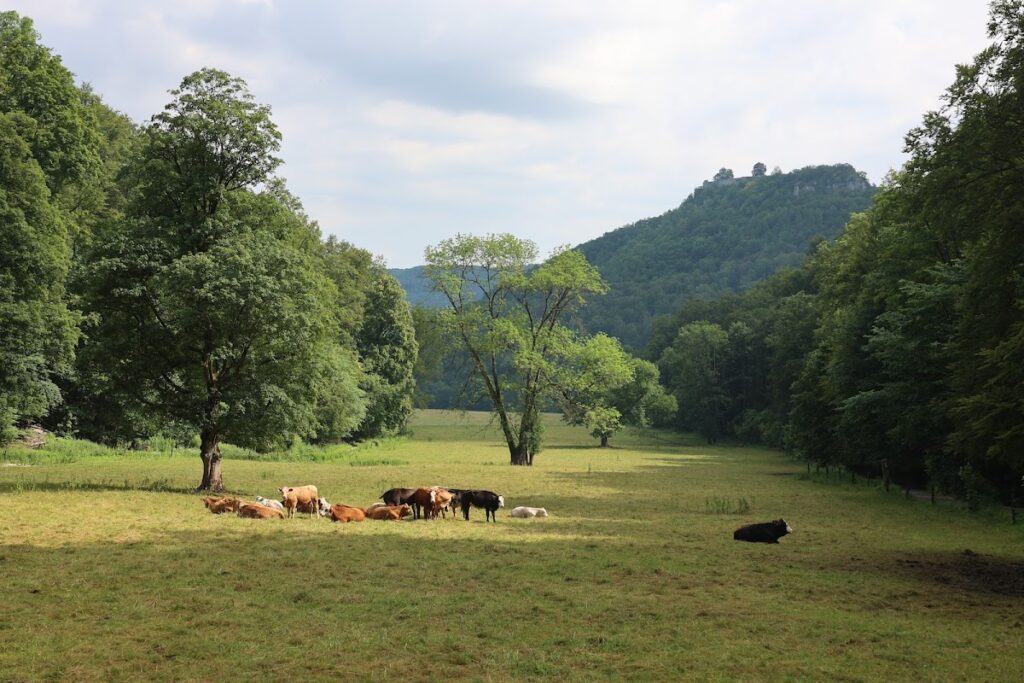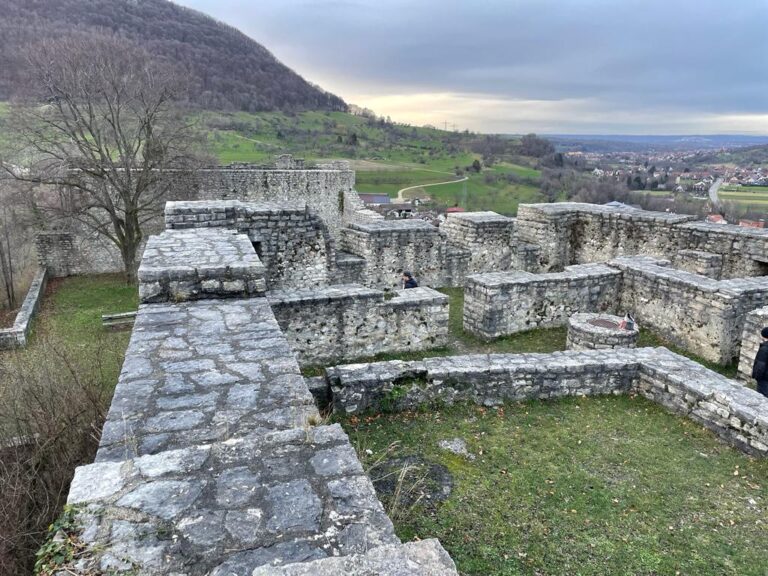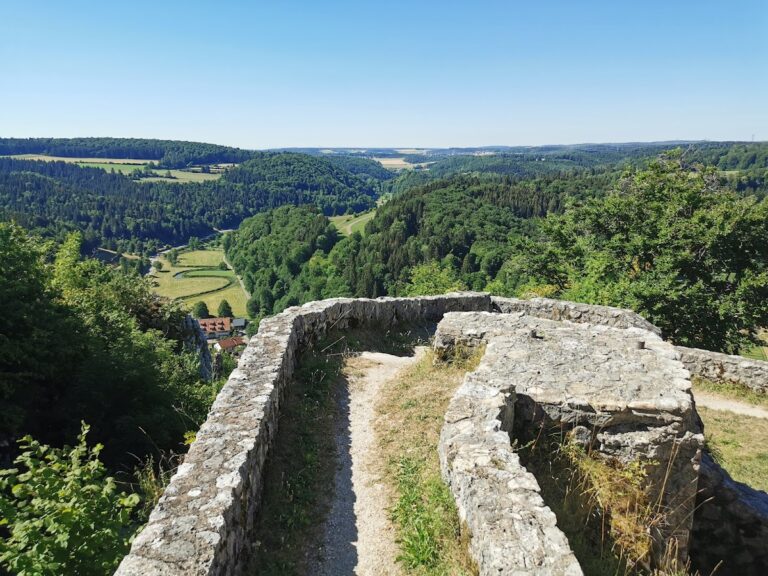Runder Berg: A Historic Fortified Hill near Bad Urach, Germany
Visitor Information
Google Rating: 4.8
Popularity: Very Low
Google Maps: View on Google Maps
Official Website: www.badurach-tourismus.de
Country: Germany
Civilization: Unclassified
Remains: Military
History
Runder Berg is an oval-shaped hill located near the town of Bad Urach in Germany. The site reveals a long history of human occupation, spanning from the early Bronze Age through the early Middle Ages. Its strategic position above a valley and connection to the surrounding plateau made it a valuable location for settlement and fortification.
The earliest known human activity dates back to the early Bronze Age, around 1600 BCE, with intermittent phases of habitation continuing through the late Iron Age. Notable settlement phases occurred between 1100 and 750 BCE, around 550 BCE during the Hallstatt period, and again in the late La Tène period of the 2nd and 1st centuries BCE. These repeated occupations indicate the hill’s ongoing significance across centuries.
In the 4th and 5th centuries CE, Runder Berg became the seat of a local Alamannic ruler, known in Latin as a regulus or petty king. This settlement was protected by a wooden and earth rampart stretching approximately 220 meters long. The community housed specialized workshops where artisans produced gold, bronze items, and bone carvings. Around 500 CE, this Alamannic stronghold was destroyed, a fate likely connected to the expanding power of the Frankish king Chlodwig I, who defeated the Alamanni and caused the exile of their ruling elite.
During the 7th and 8th centuries, the site was occupied by a Frankish noble family. Evidence points to a large timber building with three aisles, measuring 20 by 9 meters, interpreted as a palas, or main hall, surrounded by heated residential structures called kemenaten. This period also saw a variety of craft workshops including weaving rooms, a smithy, a mill, and a kitchen, suggesting a self-contained fortified residence. The presence of arms and spurs indicates that the settlement likely housed heavily armed cavalry. This Frankish fortification may have met its end around 750 CE, possibly in connection with the violent events known as the Blood Court at Cannstatt, which suppressed Alamannic resistance.
Between the 9th and 10th centuries, a stone castle was constructed on the site. This later fortress included a defensive wall along the hillside and at least three rectangular towers. Inside, the buildings featured comforts such as tiled stoves and glass windows, reflecting an elevated status. The castle remained in use until the early 11th century when it was finally abandoned. Whether this fortress was succeeded directly by the nearby Hohenurach castle remains unclear.
Research into Runder Berg’s history began with private excavations by Helmut Burkert after World War II and was followed by extensive archaeological work from 1967 to 1984 under the Heidelberg Academy of Sciences. These investigations have greatly contributed to understanding the site’s role as a fortified center of power during the early Middle Ages.
Remains
The summit of Runder Berg forms an oval plateau covering roughly 0.45 hectares, positioned about 45 meters above the surrounding land. Archaeological investigations have revealed layers of construction from different periods, reflecting the hill’s long and varied use.
From the 4th and 5th centuries, the Alamannic settlement was encircled by a 220-meter long rampart made of wood and earth. This enclosure contained workshop areas where skilled craftspeople created gold and bronze objects as well as bone carvings, indicating a complex and specialized economy within the fortified space.
In the Frankish phase of the 7th and 8th centuries, a prominent three-aisled timber hall, measuring 20 by 9 meters, stood at the heart of the site. Surrounding this palas were heated residential buildings known as kemenaten. The settlement also included specialized craft structures such as weaving workshops, a smithy for metalwork, a mill for grain processing, and a kitchen, all of which point to a self-sufficient noble residence. Numerous finds, including jewelry, disc-shaped brooches known as fibulae, spindle whorls used in textile production, and spurs, support the interpretation of a strong cavalry presence within the community.
Later, during the medieval period, the hilltop was transformed with the construction of a stone castle. This fortress was fortified by a defensive wall running along the hillside, strengthened with at least three rectangular towers. Interior buildings were fitted with tiled stoves, which provided heating, and glass windows, hinting at a degree of comfort and wealth. The remains of these stone structures, along with foundational features, survive to varying degrees and have been systematically recorded in archaeological digs.
Today, visitors can observe earthworks and the remains of stone walls and building foundations that reflect the site’s evolving defenses and residential spaces. These preserved features result from careful excavation over several decades, shedding light on the successive communities that occupied Runder Berg across more than two millennia.










